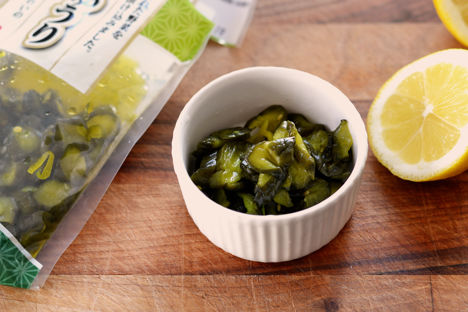
Flavours of Japan: Japanese pickles (tsukemono)
Danny Kingston makes no secret of his love of pickles. Here he guides us through four various varieties of Japanese pickles, their unique characteristics and perfect accompaniments.
Flavours of Japan: Japanese pickles (tsukemono)
Danny Kingston makes no secret of his love of pickles. Here he guides us through four various varieties of Japanese pickles, their unique characteristics and perfect accompaniments.
View more from this series:
Flavours of JapanWhenever I dreamily start to think of pickles, a whole variety of food memories and recollections often come popping into my head. A little huddle of firm cornichons to accompany pork rillettes. Uncle Michael’s infamous tangy onions, huge and bulbous, spiked with a touch of chilli. Childhood doorstep sandwiches, filled with slices of cheddar and slathered with glowing piccalilli on top. These are nice thoughts to have but they do all serve as reminders that pickles, especially your British garden variety, do have a tendency to bash you over the head with their pungency. One bite can sometimes leave you weeping and reaching for a handkerchief, to wipe your sweaty brow and then quickly honk into afterwards. Yes, pickles are wicked in more ways than one.
Thankfully, in our global village, there are pickles available that are delicate, bright and a lot more refined than our homegrown versions, such as tsukemono, which sits atop the umbrella of Japanese pickles.
Tsukemono is a lovely, generic term, as it translates quite literally as ‘pickled things’ and the list of fruit and vegetables used for preserving is a long one. The methods of pickling are also fairly extensive with the main ingredients consisting of salt, vinegar and sugar; along with miso and soy, as you would sort of expect with Japanese cuisine. However, sake, rice bran and mustard are also used for equal effect. A blast of karashizuke or mustard seed is often deployed when pickling aubergines; to achieve a spicy, peppered quality to their silken flesh. A journey that can take at least three months.
Generally speaking, in terms of time spent, the longer a particular ingredient spends ruminating in a brine, particularly rice bran, the more intense it will become. This is all down to the process of lactic-acid fermentation; which sounds highly scientific, so it might be better to think of your radish or cabbage going in the pot for a nice bath with some flourishing microbes. Bacteria that is beneficial by the way, not just for taste but also digestion.
Pickling times can also be quite quick. Asazuke is the method prescribed to short, shallow pickling and this is the most favourable method in Japanese households, to turn around crisp and colourful slivers of daikon, cucumber and carrot. And whilst pickling at home is still popular, different varieties of tsukemono are readily available in supermarkets. Well, in specialised ones at least.
What is the appeal or importance of tsukemono though? That would come down to the strong notion of harmony in Japanese cooking. Elements and flavours are regularly counterbalanced against each other. Heavy rich umami needs to be pepped up by zest. Plain rice and soups are just that, plain, and therefore a dense thwack of alkaline funk is often needed for the palate. Colour is also essential, to dress and elevate the plate. And this is where tsukemono steps in to do the job. For if anything, they are always quite vivid and pleasing to look at.
Here are four types of Japanese pickles that you might like to try out cooking with at home:
Ginger
Possibly the most ubiquitous of all Japanese pickles, as this is usually found accompanying your tray of lunchtime sushi, along with a sachet of soy and a blob of wasabi. Light and delicate at first bite, these paper-thin pink slices of ginger soon warm up on the tongue. But they are nowhere near as fiery as when in their raw incarnation.
Fukujinzuke (radish)
A tart pickle made from mooli or radish, this is commonly used with curries or to accompany side dishes such as a onigiri rice balls. Named after one of the Seven Lucky Gods in Japanese mythology, namely the God of luck, good fortune and longevity, these pickles are usually bright red or yellow and deliver a fantastic texture.
Ao kyuuri (cucumber)
One of my favourite European-style pickles are gherkins (or Wallys, as they are known around my way) but these cucumbers are quite different in that they are defiantly brackish by comparison. They just err on the side of sourness too but in a good way and go very well with clean, fresh flavours. An excellent partner for fish then.
Umeboshi (plum)
These Japanese pickled plums are often attributed to curing hangovers, due I suspect to the inherent salt and sour kick they deliver. Should you find yourself feeling delicate over the next couple of weeks, one of these withered plums popped into the mouth will bring you to your senses in no time, I guarantee you that.

